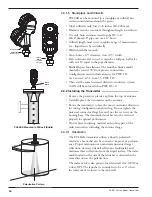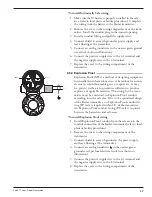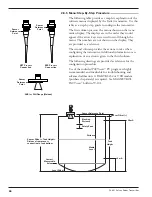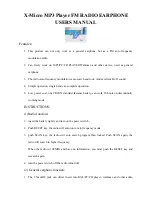
10
58-601 Pulsar
®
Radar Transmitter
2.3
Before You Begin
2.3.1 Site Preparation
Each PULSAR Radar transmitter is built to match the specific
physical specifications of the required installation. Make sure
the antenna connection is correct for the threaded or flanged
mounting on the vessel or tank where the transmitter will
be placed. See Mounting, Section 2.4.
Make sure that the wiring between the power supply and
Radar transmitter are complete and correct for the type of
installation.
When installing the Radar transmitter in a general purpose
or hazardous area, all local, state, and federal regulations
and guidelines must be observed. See Wiring, Section 2.5.
2.3.2 Equipment and Tools
No special tools are needed. The following items are
recommended:
• Threaded antenna and transmitter . . . . . . 2" (50 mm)
• Transmitter/antenna connection. . . . . . . . 1
3
⁄
4
" (44 mm)
• Transmitter adjustment . . . . . . . . . . . . . . 1
1
⁄
8
" (28 mm),
3
⁄
32
" (2.5 mm) Hex
• Torque wrench . . . . . . . . . . . . . . . . . . . . . highly desirable
• Flat-blade screwdriver
• Digital multimeter or volt/ammeter . . . . . Optional
• 24 VDC (23 mA) power supply. . . . . . . . Optional
2.3.3 Operational Considerations
Radar applications are characterized by three basic conditions;
Dielectric, Distance (measuring range) and Disturbances
(turbulence, foam, false targets, multiple reflections and rate
of change). The PULSAR Radar transmitter is offered with
three antenna configurations—Dielectric Rod, 4" (DN100)
Horn and 6" (DN150) Horn. Ideally, the 6" (DN150)
Horn antenna should be used to ensure the best possible
performance in all operational conditions.











































